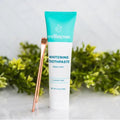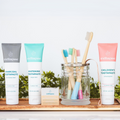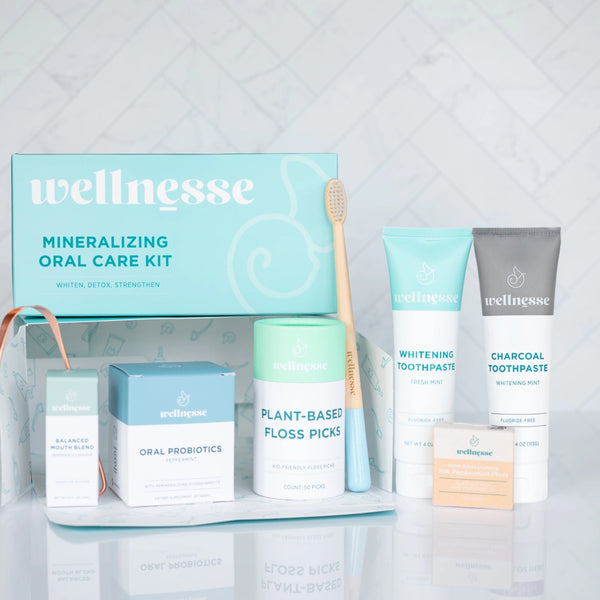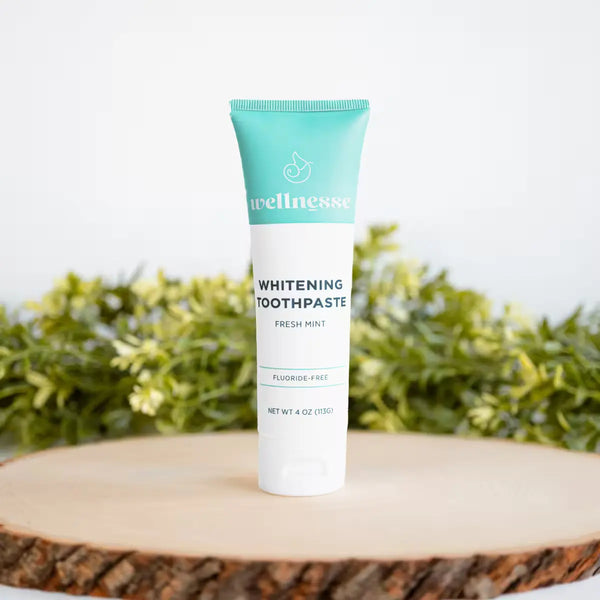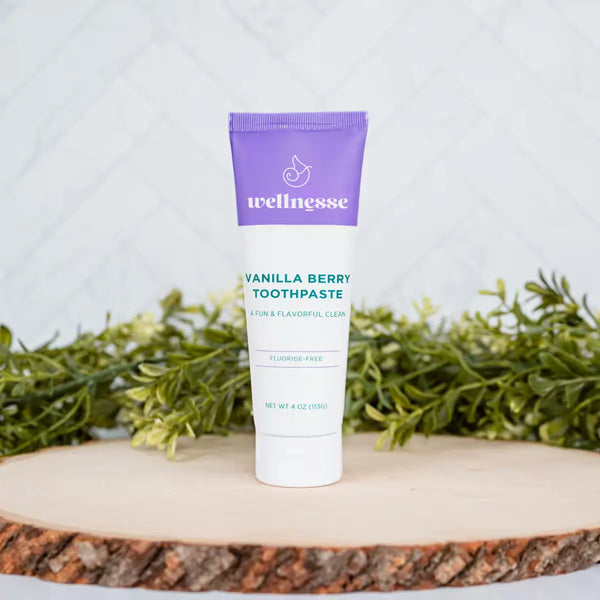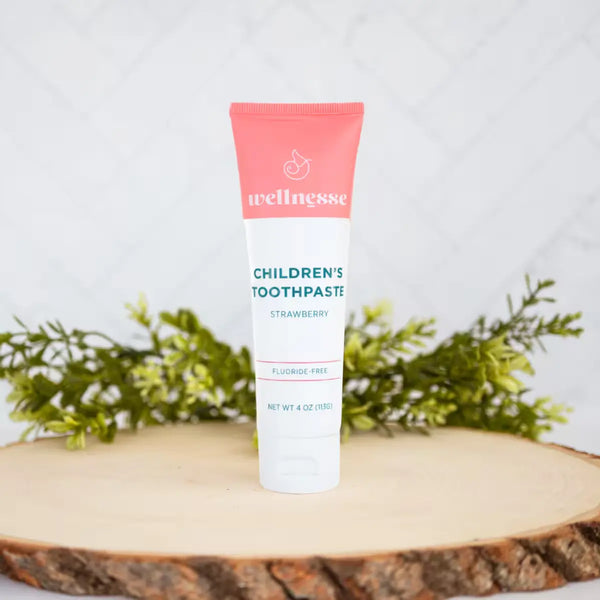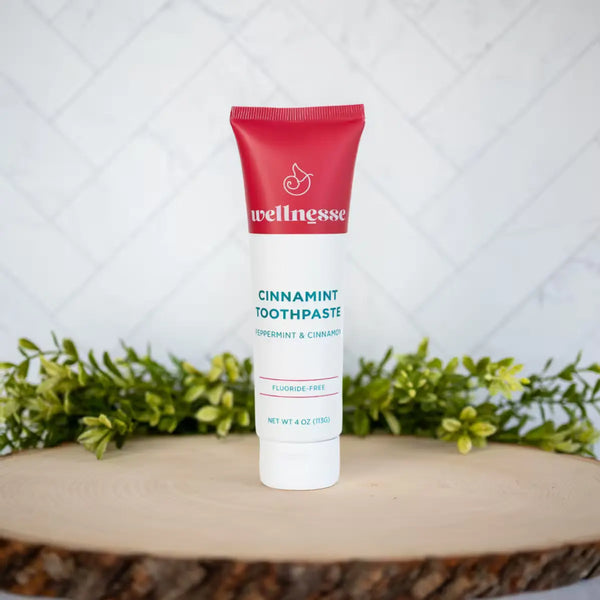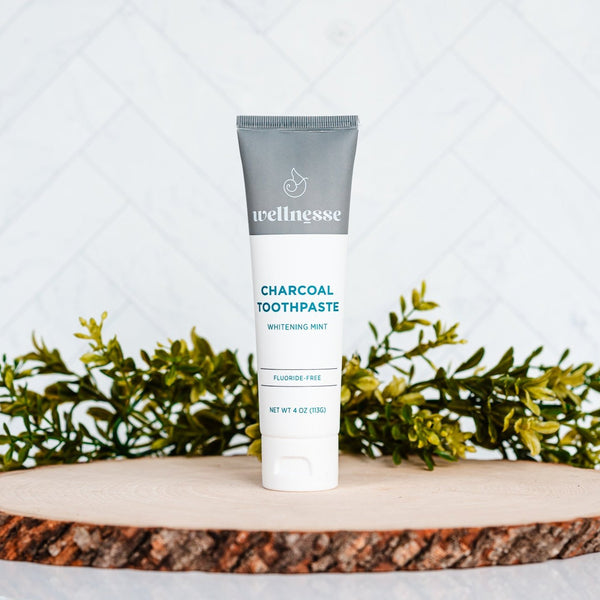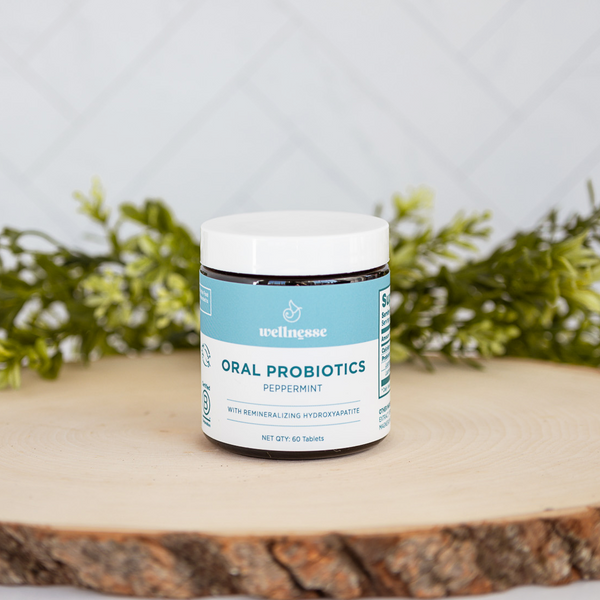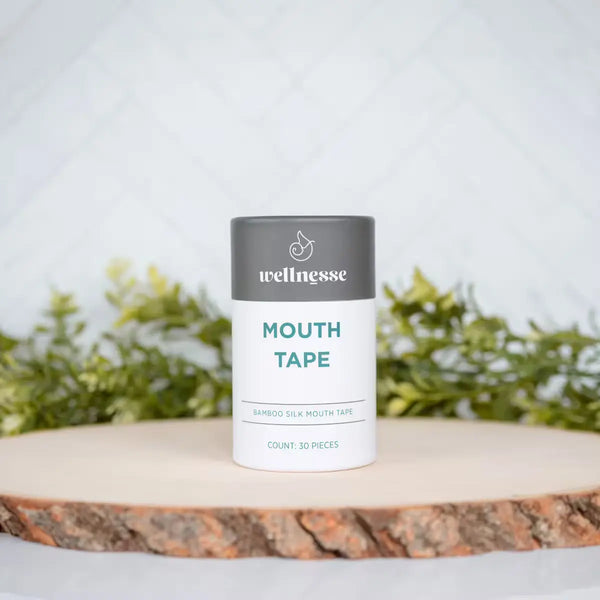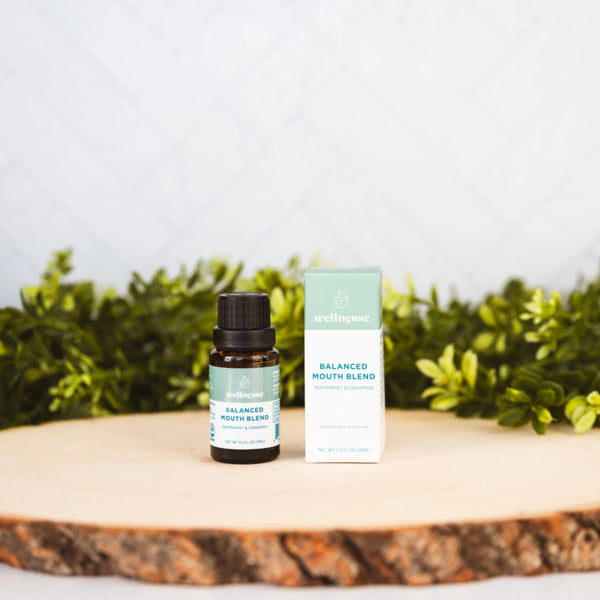It is a sad day when we realize that our favorite face cream or pricy body lotion hides nasty chemicals and toxins that can disrupt our hormones and harm our health. But there’s growing evidence that many of the ingredients used in conventional personal care products aren’t as good for us as their marketing would lead us to believe.
A few months ago, on the blog, we dove deeper into some of the toxins to watch out for in toothpaste and mouthwash. Unfortunately, the issues with conventional personal care ingredients don’t end with oral care.
We’re widening the scope today to look at some of the main culprits in our personal care and beauty products, how they affect our hormones, and how we can avoid bringing these toxins into our homes.
Are you tired of trudging through impossible-to-read ingredient labels? Try our all-natural, effective personal care products - made only with pronounceable ingredients!
How Do Toxins in Personal Care Products Affect our Hormones?
Hormones control many of the essential processes in our bodies. We already know they play a vital role in puberty, fertility, and childbirth and impact our health in countless ways. Women, especially, can attest to the power of changing hormones on our bodies and mood!
In addition to sexual development and reproductive health, hormones significantly influence how our children grow and develop. Even into adulthood, hormones are responsible for many of the day-to-day functions we rely on to stay healthy. These include:
- Sleep
- Digestion
- Breathing
- Blood sugar
- Stress management and the fight-or-flight response
Hormones act as chemical signals, telling our bodies how to respond and function. They are released by glands located throughout the body. The complete system of glands and hormones is known as the endocrine system.
Unfortunately, this delicately balanced system can be disrupted by outside influences, including a wide group of toxic chemicals known as endocrine disruptors (EDCs).
According to the FDA, endocrine disruptors are “chemicals that interfere with endocrine function, leading to adverse effects.” In other words, the disruptions caused by exposure to these chemicals can negatively affect our overall health and well-being. Even the smallest changes to our hormonal systems can have serious effects. In fact, studies have linked endocrine disruptors to everything from lower fertility to an increased risk of cancer.
Unfortunately, narrowing down the effects of different toxins on our hormones is tricky. We’re exposed to such a wide range of these chemicals in our day-to-day lives (it hurts to admit, but it’s true) that scientists struggle to know which toxin is doing what. It’s likely that the interplay between the different chemicals also impacts how they affect our bodies.
Still, research suggests that some of the chemicals found in our personal care and cosmetic products affect our hormones and our thyroid and disrupt the healthy function of our bodies. Below, we’ll dive into five of the worst culprits of endocrine disruption.
Parabens
Perhaps one of the best-known endocrine disruptors, parabens are found in many beauty and personal care products. Parabens are preservatives that prevent mold growth and extend a product’s shelf-life.
This function may sound harmless, but sadly, it’s not the full story. Research into the effects of parabens on human health has been raising alarm bells for years.
According to the BCPP (Breast Cancer Prevention Partners), parabens can mimic estrogen in our bodies. As a result, they may affect the normal development of breast cells, potentially leading to breast cancer.
Common paraben offenders to look out for include
- Methylparaben
- Ethylparaben
- Heptylparaben
- Propylparaben
- Butylparaben
Look for the other names for these chemicals, including those listed above combined with ‘4-hydroxylbenzoate’ (e.g., methyl-4-hydroxybenzoate).
Phthalates
Phthalates seem to pop up in nearly every personal care ingredient list, including lipsticks, nail polish, hair spray, shampoo, skincare, soap, and perfume.
After parabens, this group contains some of the most widely known endocrine-disrupting chemicals. According to The Campaign for Safer Cosmetics, phthalates are linked with infertility and lowered sperm count in men. Although there’s limited evidence from human studies, animal studies show that phthalates can increase the risk of developing cancer.
Two phthalates, DBP and DEHP, are banned in cosmetics sold in the European Union because of their potentially harmful health effects.
In the US, these and a variety of other phthalates are banned in products for children, but there’s currently no restriction on their use in adult personal care products.
On product labels, look out for the following phthalates:
- Dibutyl phthalate (DBP)
- Dimethyl phthalate (DMP)
- Diethyl phthalate (DEP)
- Di(2- ethylhexyl) phthalate (DEHP)
BHA & BHT
These two closely related chemicals are preservatives. They are commonly found in hair products, moisturizers, deodorants, sunscreen, and makeup.
Also known as butylated hydroxyanisole (BHA) and butylated hydroxytoluene (BHT), these chemicals are endocrine disruptors that mimic estrogen in our bodies. According to research published in 2012 by Molecular Carcinogenesis, they are also known carcinogens and increase the risk of tumors forming when tested on mice.
Plastics
As if plastic pollution in our oceans wasn’t bad enough, many plastics are endocrine disruptors. While plastics are sometimes used as ingredients, they are more frequently used only in packaging, which isn’t as reassuring as it sounds.
Unfortunately, cheap plastic packaging can leach, bleed, and melt into the formula it contains, contaminating the products we use on our hair, skin, and mouths.
One particularly notorious plastic chemical is BPA (Bisphenol-A). BPAs are restricted for use in products intended for babies but are still allowed in packaging for adult products. One 2015 review published by the International Journal of Environmental Research and Public Health conclusively determined that BPA affects puberty and increases the risk of female infertility.
Choosing products that come in plastic-free packaging, such as glass, is an excellent first step to protecting your and your family’s health.
Formaldehyde
While many brands have made adjustments to their ingredients, formaldehyde remains a fairly common preservative in some beauty products. Nail polish is the top offender, but you can also find it in hair products, body wash, and soap.
The most common reactions to formaldehyde are irritation to the eyes, nose, throat, and skin, allergic contact dermatitis, blisters, scalp burns, and hair loss. While it’s rare and requires high or prolonged exposure, formaldehyde has links to cancer.
At Wellnesse, we know nothing is worth risking your families’ health - especially when there are clean, non-toxic alternatives!
How Can You Avoid Toxins in Personal Care Products?
We call them hidden toxins for a reason. Many products have densely written labels with baffling chemical names -- you’d need to be a chemist to untangle the complete list. (That’s why we prioritize using only pronounceable ingredients!)
Plus, companies aren’t legally required to list every ingredient. They are allowed to keep the exact formulation of any fragrances they use a secret, using only the words ‘parfum’ or ‘fragrance’ on the label. But behind these single words lurks a list of potentially harmful chemicals, so a red flag should appear when you see them.
Knowing the main toxins is a solid first step - it means you can pick the worst offenders on sight. Learn to read labels, research, and understand what you’re exposing yourself to, because what you put on your body goes in your body!
Are There Safe Options?
Yes!
At Wellnesse, we are passionate about creating clean, high-quality products that you and your family can enjoy without fear of hidden chemicals.
Our products are free of all toxins (including all those listed above!) and bursting with natural ingredients that are both effective and beneficial to your body. Our ingredients are cruelty-free and GMO-free and most of them have the cleanest possible rating from the Environmental Working Group. Our B Corp certification ensures that all our processes meet the highest social and environmental performance standards so that you can trust our products from their formulation to delivery at your door. Explore our collections here!
Resources
- Andersen, F. A. (2008). Final amended report on the safety assessment of methylparaben, ethylparaben, propylparaben, isopropylparaben, butylparaben, isobutylparaben, and benzylparaben as used in cosmetic products. International journal of toxicology, 27, 1-82. https://doi.org/10.1177/109158180802704s01
- Del Pup, L., Mantovani, A., Luce, A., Cavaliere, C., Facchini, G., Di Francia, R., Caraglia, M., & Berretta, M. (2015). Endocrine disruptors and female cancer: Informing the patients (Review). Oncology reports, 34(1), 3–11. https://doi.org/10.3892/or.2015.3997
- Darbre, P. D., & Harvey, P. W. (2014). Parabens can enable hallmarks and characteristics of cancer in human breast epithelial cells: a review of the literature with reference to new exposure data and regulatory status. Journal of Applied Toxicology, 34(9), 925-938. https://doi.org/10.1002/jat.3027
- Vikis, H. G., Gelman, A. E., Franklin, A., Stein, L., Rymaszewski, A., Zhu, J., Liu, P., Tichelaar, J. W., Krupnick, A. S., & You, M. (2012). Neutrophils are required for 3-methylcholanthrene-initiated, butylated hydroxytoluene-promoted lung carcinogenesis. Molecular carcinogenesis, 51(12), 993–1002. https://doi.org/10.1002/mc.20870
- Huo, X., Chen, D., He, Y., Zhu, W., Zhou, W., & Zhang, J. (2015). Bisphenol-A and Female Infertility: A Possible Role of Gene-Environment Interactions. International journal of environmental research and public health, 12(9), 11101–11116. https://doi.org/10.3390/ijerph120911101
